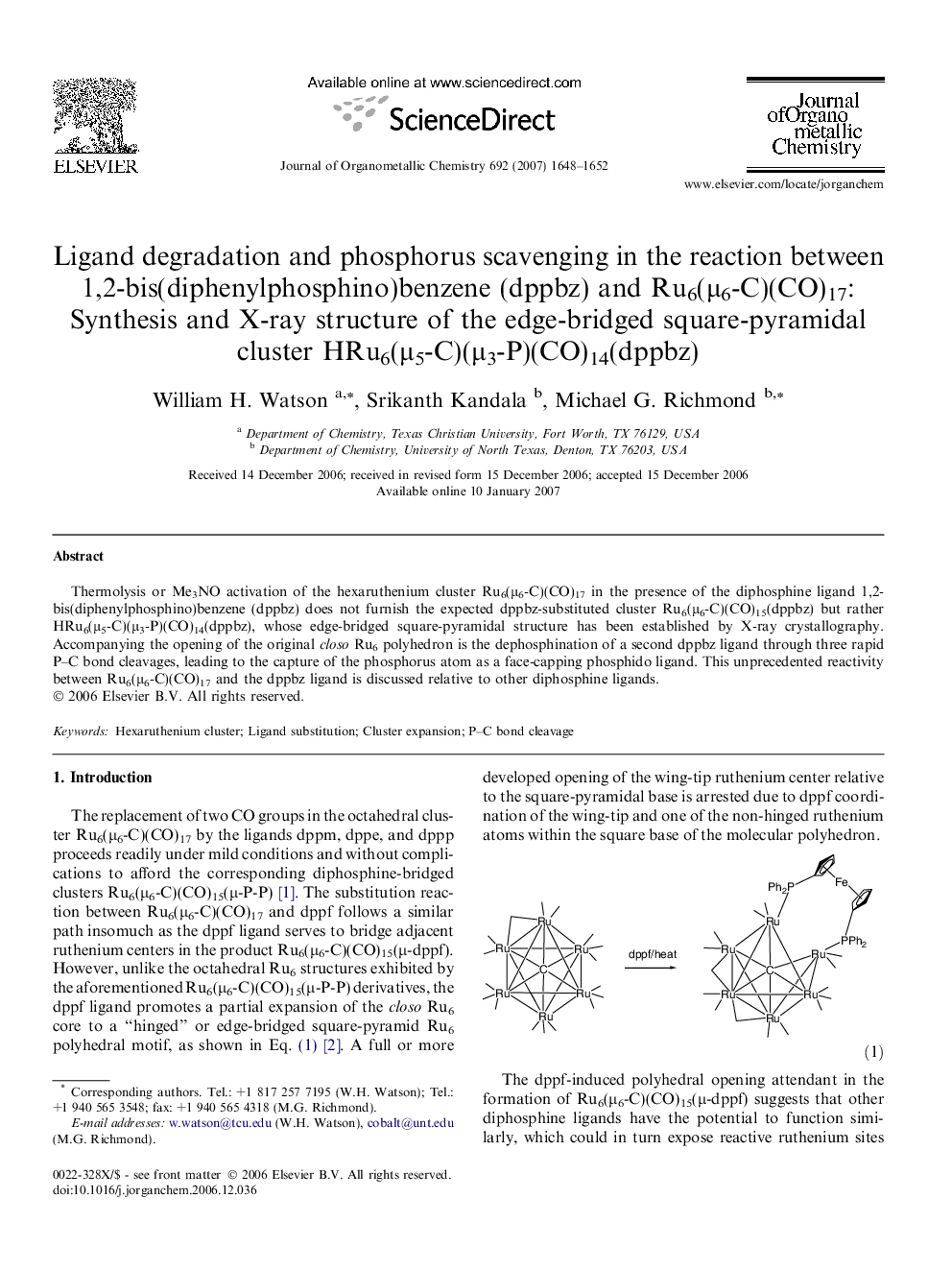| Article ID | Journal | Published Year | Pages | File Type |
|---|---|---|---|---|
| 1327348 | Journal of Organometallic Chemistry | 2007 | 5 Pages |
Thermolysis or Me3NO activation of the hexaruthenium cluster Ru6(μ6-C)(CO)17 in the presence of the diphosphine ligand 1,2-bis(diphenylphosphino)benzene (dppbz) does not furnish the expected dppbz-substituted cluster Ru6(μ6-C)(CO)15(dppbz) but rather HRu6(μ5-C)(μ3-P)(CO)14(dppbz), whose edge-bridged square-pyramidal structure has been established by X-ray crystallography. Accompanying the opening of the original closo Ru6 polyhedron is the dephosphination of a second dppbz ligand through three rapid P–C bond cleavages, leading to the capture of the phosphorus atom as a face-capping phosphido ligand. This unprecedented reactivity between Ru6(μ6-C)(CO)17 and the dppbz ligand is discussed relative to other diphosphine ligands.
Graphical abstractThe hexaruthenium cluster Ru6(μ6-C)(CO)17 reacts with the diphosphine ligand 1,2-bis(diphenylphosphino)benzene (dppbz) to afford the novel cluster HRu6(μ5-C)(μ3-P)(CO)14(dppbz). The edge-bridged square-pyramidal structure of the title cluster and the presence of a capping phosphido ligand have been confirmed by X-ray crystallography. The unprecedented reactivity between Ru6(μ6-C)(CO)17 and dppbz is discussed relative to other diphosphine ligands.Figure optionsDownload full-size imageDownload as PowerPoint slide
